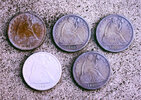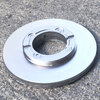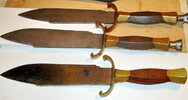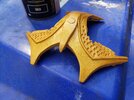CJP
Well-Known Member
Please share your technique and pictures for finishing resin casts to look like aluminum. I need to replicate some buttons similar to the ones pictured.
I'm not having any luck with resin and aluminum powder. Maybe there is a better powder and technique than I'm using? (I've tried Smooth-On 322 1A:1B:1Powder and was not able to get the casts to shine like aluminum.)

I'm not having any luck with resin and aluminum powder. Maybe there is a better powder and technique than I'm using? (I've tried Smooth-On 322 1A:1B:1Powder and was not able to get the casts to shine like aluminum.)




